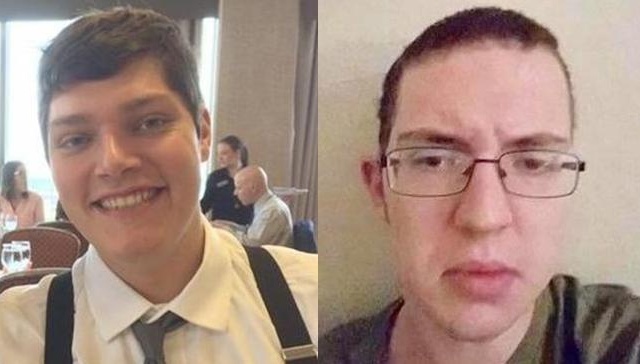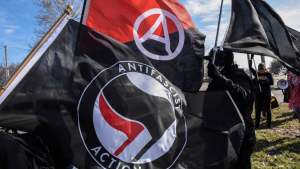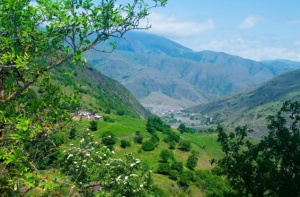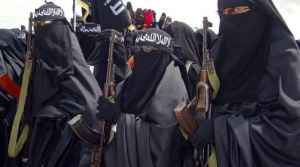
Image: Blood Drop Cross of the Ku Klux Klan. Common symbol found in public sources.
- Founded in 1865, the Ku Klux Klan is America’s original hate group.
- Targets for violence and bigotry include: African-Americans, Jews, Catholics, LGBTQ+, immigrants, and Muslims.
- No longer one unified organization, the movement is divided into factions and affiliated groups scattered across the United States.
- The Ku Klux Klan movement witnessed significant decline in recent years due to pressures from far-right movements gaining traction in the United States.
Summary of Extremist Narrative
The Ku Klux Klan is America’s original hate group. Commonly referred to as “the Klan”, “KKK”, or the “invisible empire”, the hate group’s ideology involves the promotion of white supremacy and belief in white solidarity. Principally, African-Americans have been the main target of the group, however, others targets for violence and bigotry include: Jews, Catholics, LGBTQ+, immigrants, and more recently, Muslim Americans. The use of violence, intimidation, and hate speech, is widespread among members to silence any opposition to its narrative.
History of the group
The Ku Klux Klan was born during the period of Reconstruction in the South. Originally, the group was founded as a “social club” by six former Confederate army veterans from Pulaski, Tennessee in 1865. However, as the political climate shifted in support of newly freed black slaves, the former “social club” began to embrace terror and extremism in response to the changes. Exploiting fear, and utilizing brutal violence, the original Klan terrorized newly freed black slaves throughout the South, along with whites who opposed them. Outlandish costumes, extrajudicial killings, and cross burnings, all became synonymous with the Ku Klux Klan during this time, thus heightening its reputation. The once small group grew into a movement, stretching nation-wide, gaining considerable political and public support.
In 1871, the federal government enacted the Ku Klux Klan Act, which: “was designed to eliminate extralegal violence and protect the civil and political rights of four million freed slaves”. The movement witnessed significant decline due to this legislation as political and public support faded. The Ku Klux Klan saw a resurgence in popularity in the mid-1920s, and again in the 1960s, this time in response to the civil rights movement. Today, the Ku Klux Klan exists in limited scope and size. No longer one single unified organization, based around a rigid structure or hierarchy; it is now split largely between four main warring factions scattered throughout the United States, with numerous affiliated groups.
Current state of the Ku Klux Klan
Today’s Ku Klux Klan movement lacks unity, structure, cohesion, or purpose. After years of infighting, government interference, waning public/political support, and competition with other white supremist movements, the once powerful organization is now divided and weakened. The four main factions of the movement include: the Brotherhood of Klans (BOK); the Church of the National Knights of the Ku Klux Klan (National Knights); Imperial Klans of America (IKA); and Knights of the Ku Klux Klan (KKKK). Numerous Klan-affiliated groups exist outside of the four main factions; all with varying names and ideological influences.
The Ku Klux Klan remains in a state of decline as competition with other white supremist/far-right groups have intensified. Most find the ideology of the Klan outdated, and less appealing; compared to more organized and militant neo-Nazi affiliated groups operating in the United States. Some Klan groups have adopted neo-Nazi beliefs and ideas, attempting to regain relevancy and supporters. Desperation has led others to form partnerships with neo-Nazi affiliates as seen with the “Black and Silver Solution” in 2015. Increasingly more joint events are occurring between Klan and neo-Nazi affiliated groups, providing further confirmation of the Ku Klux Klan’s inability to garner attention on its own.
Ku Klux Klan affiliated groups are predominately involved with hate rhetoric and disorganized violence. Because of the fractious nature of Klan groups today, manpower and financial support are limited. Groups are relegated to low cost options for spreading their hate rhetoric, such as through leafleting campaigns. Following the mass shooting at a historic black church in Charleston, South Carolina in 2015, Klan groups left bags of candy throughout neighborhoods across the South. Messages that praised the attack were attached, exploiting the atrocious act committed by Dylann Roof. Typically, leafleting by Klan groups is used to target African-Americans, Muslims, immigrants, and LGBTQ+ people.
Instances of disorganized violence by current or former Klan members highlight the movement’s continued state of decline. No longer able to mount significant organized attacks like the Birmingham church bombing in 1963, the current model for violence by Klan members tends to be sporadic and disorganized. There often exists a criminal element to the violence separate from Klan related activities, as many current or former members have criminal histories. As shown with the case of Frazier Glenn Cross Jr., who in 2014 went on a murder spree killing three Jewish people in Kansas, instances of disorganized violence inspired by the Ku Klux Klan’s ideology is a significant threat.
Where is the Ku Klux Klan operating?
Ku Klux Klan affiliated groups operate across the United States and beyond. The Counter Extremist Project estimates there are “around 160 known active chapters across 41 states”, with most located throughout the South. The hateful ideology of the Ku Klux Klan is not limited to the United States, we see the movement spreading to countries like Germany as well. In Europe, far-right extremism is on the rise and spreading at an alarming rate. The Ku Klux Klan’s hate filled ideology is easily incorporated into the European far-right narrative.
What are their primary recruitment methods?
The Ku Klux Klan movement relies largely on web-based media, leafleting campaigns, and public rallies, for recruitment of new members. Klan groups will often exploit mass shootings and other attacks committed by far-right actors for recruitment initiatives. Because of the increasing pressure from other white supremist/far-right groups, Klan recruiting is limited.
Pastor Thomas Robb, leader of the Knights of the Ku Klux Klan (KKKK), hosts a show on his website to attract potential recruits called, “This Is The Klan”. In the past he hosted a YouTube based program called “The Andrew Show”, with the channel name “ShowForWhiteKids”. These efforts are meant to showcase the movement’s technological side, appearing more up to date like other extremist movements.
Leafleting campaigns are used frequently for recruitment as well. Klan groups routinely distribute pamphlets and literature encouraging membership throughout the United States. New recruitment initiatives such as the “National Knight Ride”, incorporate candy with literature, to soften the movement’s image thus attracting more followers. Other leafleting campaigns mimic military style recruitment with catch phrases like “The KKK Wants You!”.
Lastly, public rallies are used to draw supporters in. This method has become somewhat outdated as recent rallies failed to deliver large scale Klan support or public attendance. A recent rally held in May 2019 in Dayton, Ohio drew approximately nine supporters with over 600 counter-protestors in attendance. This ratio of protestor versus counter-protestor is indicative of the Ku Klux Klan movement’s perpetual state of decline throughout the United States.
The Extremism Assessment Series is an initiative of Rise to Peace’s Domestic Counter Terrorism Program. It seeks to provide short educational pieces highlighting groups or social movements linked to extremist ideologies and/or tactics. Check back for new additions to the series.
















